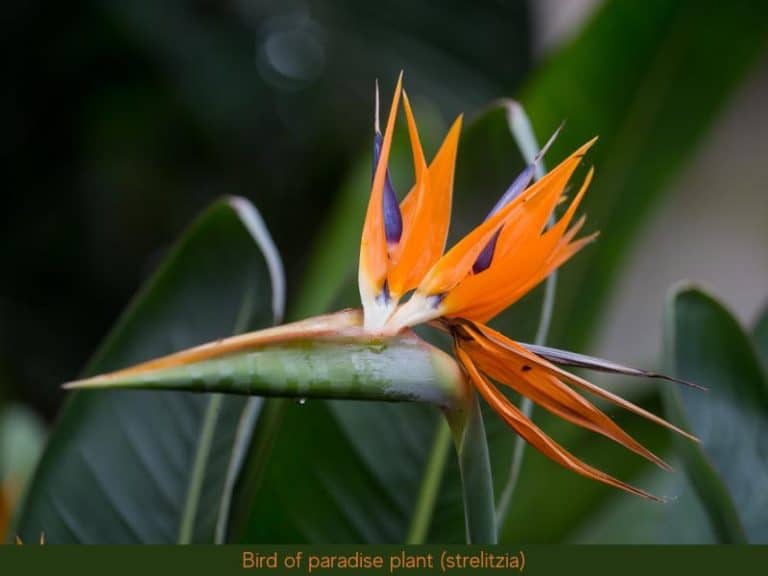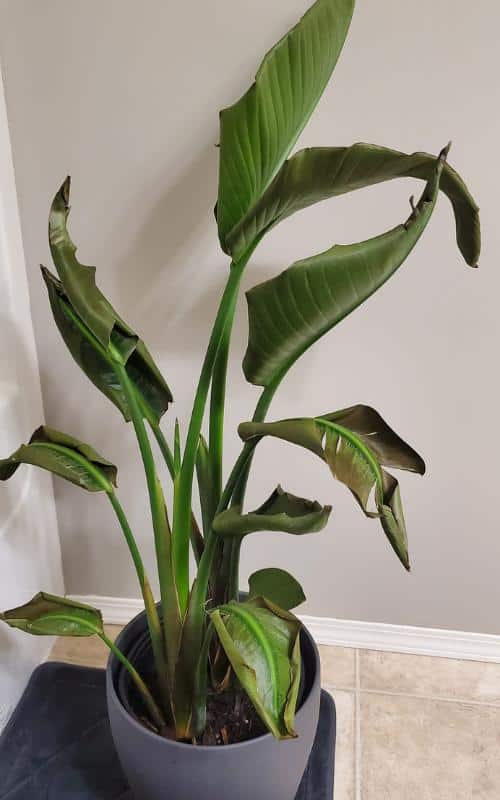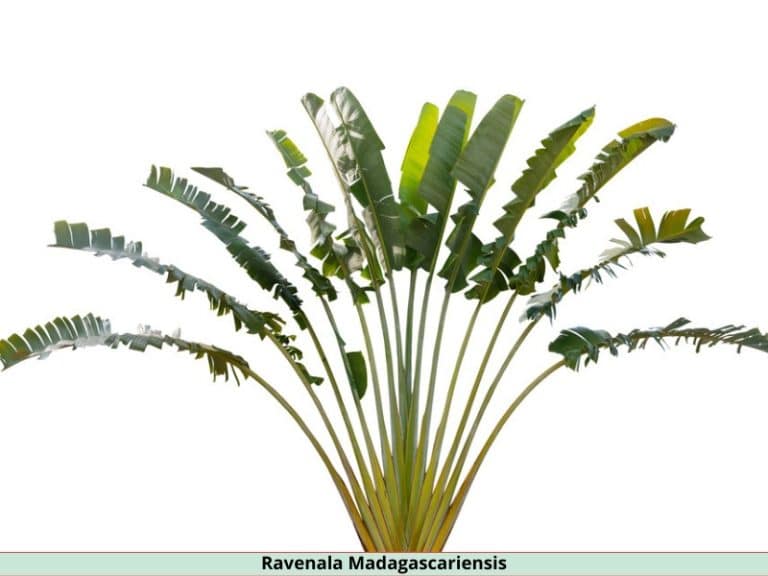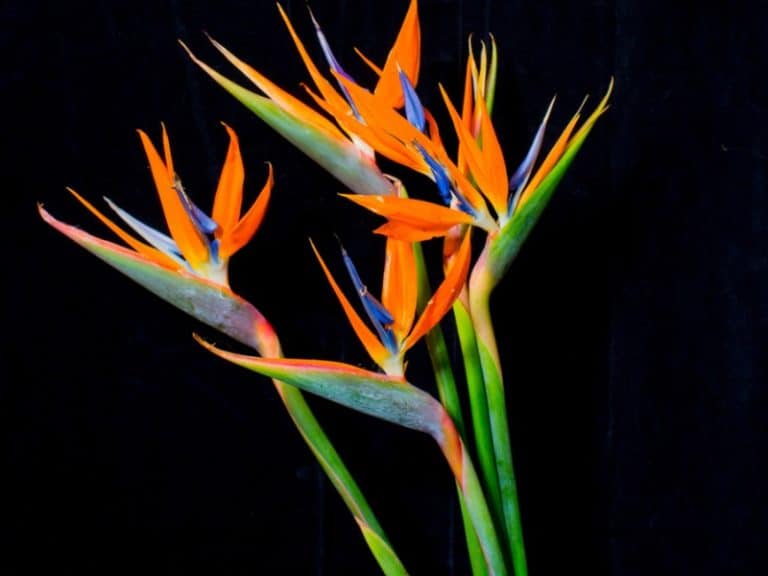Bird of Paradise Leaves Not Opening: Causes + Fixes that WORK
The bird of paradise plant (strelitzia) is often grown indoors for its large, oval-shaped, waxy leaves because it rarely blooms as a houseplant. A normal strelitzia plant unfurls its young leaves during development, otherwise, there’s a problem with it or the growth conditions you’re providing.
If the leaves of your bird of paradise are not opening, the problem could be low light conditions, underwatering, low humidity, or severe pest infestation. Provide bright indirect light, increase humidity to at least 50%, and water the plant once every 1-2 weeks to encourage the leaves to unfurl.
Why is my Bird of Paradise leaves not opening?
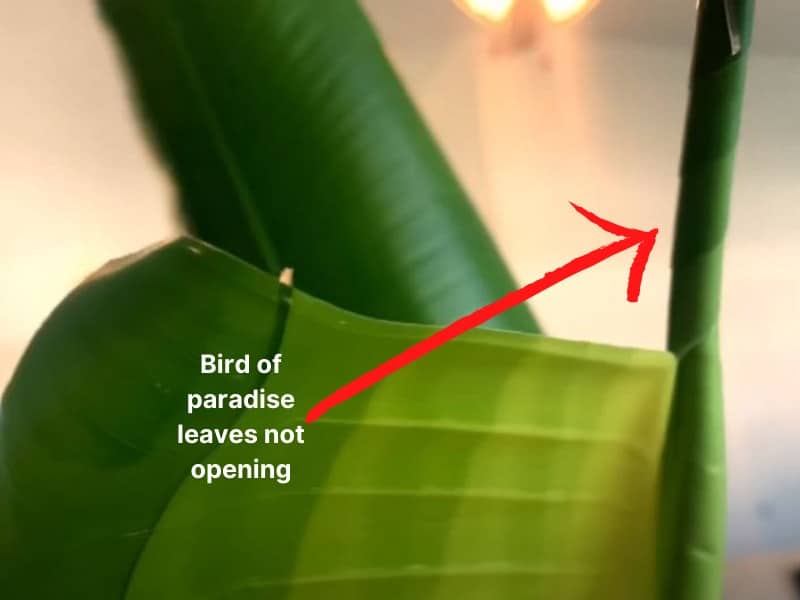
As I’ve mentioned above, your strelitzia not opening its leaves (unfurling) is a clear indication that something isn’t right with the plant. You want to make sure you care for the bird of paradise the right way for it to grow healthy leaves and blooms.
Here’s why the leaves of birds of paradise plants may fail to unfurl:
Low humidity
The bird of paradise plant thrives in places with 60-70 percent humidity. However, low humidity drastically affects it, and new leaves might not open.
Lower humidity increases water loss causing the leaves to furl as a mechanism to retain moisture. Dry air also hardens the sticky secretions from the young leaves, preventing them from opening.
Low light intensity
Light is a vital photosynthesis ingredient that enables the plant to make food and have energy for physiological processes.
The bird of paradise is a subtropical plant that prefers warmer locations with 6-8 hours of direct sunlight exposure. Placing indoor strelitzia near windows with bright indirect sunlight facilitates photosynthesis.
However, sites with little or no indirect sunlight exposure significantly decrease photosynthesis. Mature leaves with little sunlight turn yellow or brown at the tips, and the young ones furl because of insufficient energy.
Underwatering
Water forms a medium for transporting nutrients and oxygen to the various parts of the plant for growth and development.
Water is also a component of a plant’s cells, which helps keep them in shape. Giving your bird of paradise plant insufficient moisture makes the cells less turgid or flaccid. Loose cells in the plant make the plant droop and shapeless, making the new leaves remain closed.
Pest infestation
Small pests such as mealybugs and spider mites are rife in bird of paradise plants grown outdoors but can be rare indoors. Taking your bird of paradise houseplant outside for direct sunlight can lead to pest infestation. The small suckers come from outdoor plants or nearby infested structures.
Mealybugs and aphids suck the sap from the plant when they settle on them. They also penetrate and hide in the closed young leaves and damage them.
The sap is usually sticky and sometimes falls on the leaves and hardens. Afterward, it sticks to the young leaves, preventing them from opening.
How to make the leaves unfurl?
Here are the exact quick fixes to open the closed leaves of your bird of paradise plant:
| Problem | Solution |
| Low humidity | Mist and install a humidifier |
| Low light intensity | Provide direct light or install a grow light |
| Underwatering | Water the plant immediately |
| Pests | Wash off with water and use a systemic insecticide |
1. Mist the plant and install a humidifier
Bird of paradise leaves curling because of low humidity can be treated by raising the humidity.
Immediately you notice low humidity, especially when the strelitzia plant is indoors, mist the foliage with sufficient water. Misting supplies moisture which helps to reduce the transpiration rate to unfurl the leaves.
The second step is to install a humidifier near the plants. A humidifier creates a microclimate, ensuring the air is always moist to keep the leaves firm and open. Alternatively, place a tray or saucer half-filled with stones and water around the plants. The pebble tray works similarly to the humidifier and would keep the leaves open.
If your bird of paradise plant is near air conditioning vents, take it further to a place with enough air moisture to unfurl the leaves. Air conditioners blow moisture, dropping the humidity level.
2. Move the plant near a window with bright indirect light
Low light intensity from dark areas can be easily corrected by moving the plant near sources of indirect sunlight. South-facing and east-facing windows are the best sites for your plant. Harden the plant first to get acclimated to the changes.
Move the plant gradually near the windows with indirect sunlight until you get a suitable spot.
Also, taking the potted plants outside for direct sunlight exposure work if the leaves remain folded in summer. Train your plant to get used to the outdoor weather conditions, so it doesn’t get shocked and curl its leaves. Take the plant outside for a few hours, and gradually increase the exposure period up to 8 hours.
Installing an indoor grow light is the best option especially when you live in locations that rarely receive natural light. A grow lamp has light resembling the sun’s UV rays. The leaves absorb this light for photosynthesis. In that way, your bird of paradise plant gets sufficient food and energy to support uncurling of older and newer leaves.
3. Rinse the plant with sufficient water
Dip your finger 2-3 inches into your plant’s topsoil to check for moisture level. Confirm if the topsoil is loose and the plant limps to the sides. Either of these indicates your plant lacks enough water.
First, rinse the bird of paradise plant with a lot of water. Put plants in tiny pots inside a basin with water or a bath tab. Bathing encourages water to sip through the drainage holes below the container, allowing the roots to absorb them slowly.
Half fill the basin with filtered tap water and dip the container. Check the pot to ensure the water is half its height. Wait for about 30 minutes to let the water sip or until you notice wet topsoil. Remove the pot from the basin or tub.
Outdoor strelitzia plants or ones in big pots can be watered by overhead irrigation. Fill the watering can and direct the spout on the soil. A 5-minute irrigation interval is necessary to give the soil and roots enough time to absorb the water. Rinse large potted plants until the excess water flows out of the drainage holes.
4. Allow the soil dry out between waterings
Create a watering schedule to prevent the soil from drying excessively. You also want to avoid overwatering the plant to prevent root rot disease. Dip your finger in the soil to check moisture content to know when to water the plant again.
5. Hose the plant and apply a systemic insecticide
Check the leaves and other parts of the plant for small insect bite marks to confirm the pest. Observe the large opened leaves to spot any pest.
Remove the few noticeable pests by washing them with running water from a hose. For heavy infestation, fill a sprayer with neem oil and spray directly on the pests, the leaves, and other plant parts to eliminate them. The neem oil will also help in repelling the insects after removal.
However, hosing the plant parts and spraying neem oil removes only visible pests. You need a better strategy to remove tiny pests that can penetrate and hide in the furled leaves.
Systemic herbicides are the best remedy to deal with invisible pests. Their granules can be placed on the soil, then watered in to dissolve them. The roots absorb the treated water, which constitutes the plant’s sap. The pests die from ingesting it.
The table below summarizes the causes of furled bird of paradise leaves and the best ways to unfurl them.
How long does a bird of paradise leaf take to unfurl?
The furled bird of paradise leaves can take as little as one hour up to several days to unfurl, depending on the intensity of the problem making the leaves not open. Misted leaves can take about one to two hours to unfurl. However, closed leaves from pest infestation can take longer than those from low humidity.
Can the leaves open too soon?
New leaves emerging from the stem of the strelitzia plant can sometime open sooner than expected. They can be yellowish on the lighter or upper side and darker on the lower side. There’s no remedy to prevent the leaves from opening too soon. You only need to wait for the plant to correct the problem and turn back to normal naturally.
References
- Winson Horticulture: Bird of Paradise, Strelitzia reginae.
- T & M University: Light, Temperature, and Humidity.


